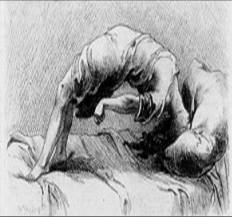 Have your chaise lounges ready folks, because this post is guaranteed to tickle. For me it’s in the taste of irony with regard to the history of an old guard prone to the persecution of any professions it has considered a competitor. But for you it may be the tickle of a different sort, one regarding a history of another kind.
Have your chaise lounges ready folks, because this post is guaranteed to tickle. For me it’s in the taste of irony with regard to the history of an old guard prone to the persecution of any professions it has considered a competitor. But for you it may be the tickle of a different sort, one regarding a history of another kind.
Once upon a time the medical profession recognized a disorder known as female hysteria. In the mid-19th century this condition was thought to result from the stresses of modern living. As the name indicates, it was a purely female phenomenon, and the symptoms included faintness, nervousness, sexual desire, insomnia, fluid retention, heaviness in abdomen, muscle spasm, shortness of breath, irritability, loss of appetite for food or sex, and “a tendency to cause trouble.” Although the notion of female hysteria actually dates as far back as ancient Greece, it is the relatively more recent classification that interests me.
“The women who visit me vary in age and social standing. Some of the women have husbands, some are single and there have even been ladies of the night pay me a visit. There is no pattern to when or how their female hysteria will be brought on and the only way I have found to effect a cure is by the method of pelvic massage.”*
The prescribed treatment for this gender-specific stress disorder was the pelvic massage. Yes, doctors would treat patients to a hands-on genital rubbing, until the hysterical female reached sexual climax. Voilà! Patient cured by orgasm—well, until the next episode that is…
“My husband was shocked at my repeat visits to the doctor but insisted I should employ a maid at the house who would learn the doctor’s methods and deal with me whenever I required her services.”*
On first thought it might be easy to misconstrue that treating female hysteria was a pleasurable act for both doctor and patient, but in actuality it was an arduous task, so much that it was not uncommon for the therapeutic duties to be passed on to a midwife, or even a husband. Some women would take hours to reach “healing”, and this seriously cut into the time and economics for the doctor. As a result, a number of useful items were born, because as they say, “Necessity is the mother of invention.”
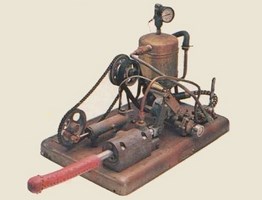 The first item of interest was the fainting room. Homes we’re built with private rooms in which hysterical ladies would be treated; they were furnished with the latest in hysteria decor, like the fainting couch. These chaise longues were specifically designed for the ease and comfort of receiving pelvic massages. Finally, as doctors became overwhelmed by ever-increasing patient load, two nifty little devices were spawned. The water massager and the vibrator.
The first item of interest was the fainting room. Homes we’re built with private rooms in which hysterical ladies would be treated; they were furnished with the latest in hysteria decor, like the fainting couch. These chaise longues were specifically designed for the ease and comfort of receiving pelvic massages. Finally, as doctors became overwhelmed by ever-increasing patient load, two nifty little devices were spawned. The water massager and the vibrator.
“In 1902, the American company Hamilton Beach patented the first electric vibrator available for consumer retail sale as opposed to medical usage, making the vibrator the fifth domestic appliance to be electrified, after the sewing machine, fan, tea kettle, and toaster, and about a decade before the vacuum cleaner and electric iron.” ~ Wikipedia
That’s right, folks—you can thank modern medical science for your pocket rockets, magic wands and jack rabbits–mechanical massagers designed to cure the ubiquitous condition of female hysteria. In an era when it was unfathomable that women had sexual needs that went beyond reproduction, these handy little stimulators were the buzz of medical technology.
“To get the best possible results and a thorough massage you must use The American Vibrator. No modern home is complete without one. Our machine is guaranteed.” ~ American Vibrator Company, St. Louis, Mo.
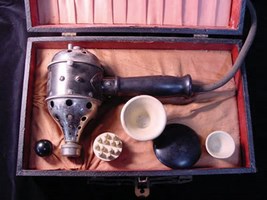 The twentieth century saw a sharp decline in the number of diagnosed cases of female hysteria, as study and observation could yield no particular cause for the disorder. In fact, over 75 pages of different causes were ascribed to female hysteria, some pointing out that it became a catchall diagnosis for any unidentifiable ailment.
The twentieth century saw a sharp decline in the number of diagnosed cases of female hysteria, as study and observation could yield no particular cause for the disorder. In fact, over 75 pages of different causes were ascribed to female hysteria, some pointing out that it became a catchall diagnosis for any unidentifiable ailment.
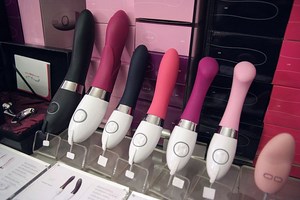 Sigmund Freud himself was at the forefront of reclassifying hysteria (from schizophrenia, conversion disorders and anxiety attacks for example) into the now more commonly used anxiety neurosis. As society learned more about human sexuality, the practice of classifying what we would consider today as the need for a good ol’ romp a medical disorder diminished. Lucky for us the manufacture and sale of vibrators continued, but starting in the 1960’s they were hawked for the same uses that they are today—as sexual stimulators.
Sigmund Freud himself was at the forefront of reclassifying hysteria (from schizophrenia, conversion disorders and anxiety attacks for example) into the now more commonly used anxiety neurosis. As society learned more about human sexuality, the practice of classifying what we would consider today as the need for a good ol’ romp a medical disorder diminished. Lucky for us the manufacture and sale of vibrators continued, but starting in the 1960’s they were hawked for the same uses that they are today—as sexual stimulators.
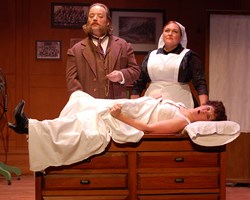
The irony for me is that today modern medicine continues to focus on other (alternative) healing professions’ sometimes less than rational historical roots, as a way to undermine what have become in many cases very rational practices. But from bloodletting to lobotomies, modern medicine has had its fair share of irrational theories and practices, some that continue today (like pharmaceutical treatments for ADD and depression). Cultural practices evolve with our understanding of the body, mind and physics. As we learn more, we adapt how we address “problems”. Sometimes it’s as simple as doing away with an illogical morality, as the curious case of female hysteria has proven. Paradigms change, and when we change our behaviors as a result we get closer to truly helping people. By the same token, without the challenge of finding a cure for female hysteria, we might still have some very overworked doctors, midwives and husbands. Phew…hallelujah.
*Legitimacy of quote unconfirmed












